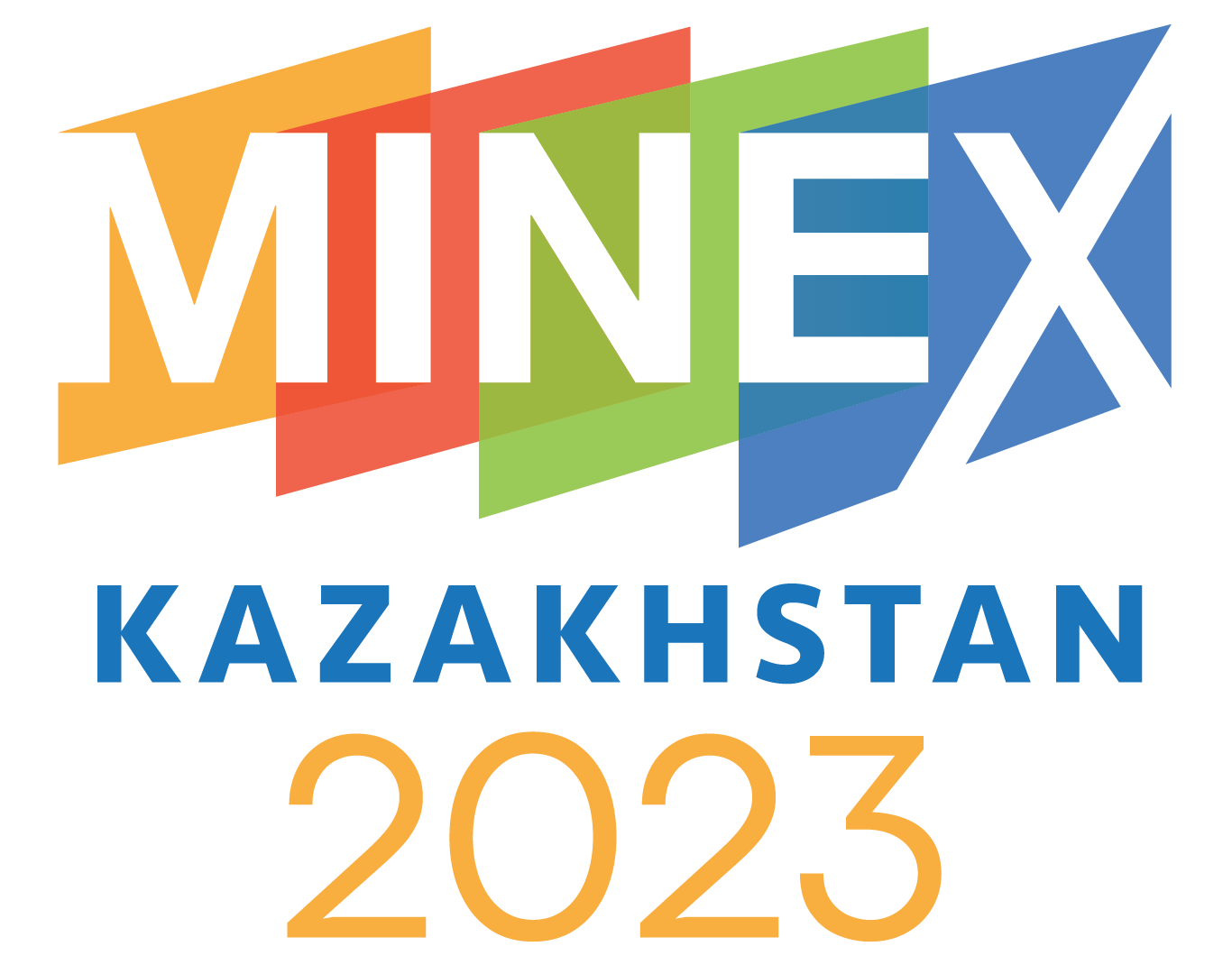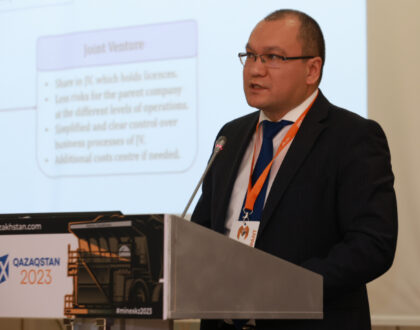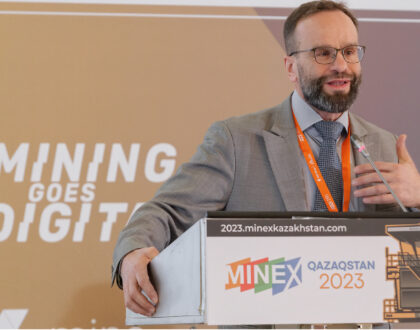Kazakhstan’s Uranium Industry and the Middle Corridor Come Together

The Trans-Caspian International Transport Route (TITR), commonly known as the Middle Corridor, is going nuclear as Kazakhstan’s National Atomic Company, Kazatomprom, announced in December the delivery of natural uranium to Canada. As Russian ports and transport routes are under sanctions due to the war in Ukraine, Kazakhstan is looking for alternative ways to reach international markets; thus Astana has supported the Middle Corridor since the war commenced. The recent uranium delivery is not the first and will likely not be the last.
Kazatomprom has not detailed how much uranium was delivered or whether future deliveries via the Middle Corridor will occur soon. However, the route the uranium took has been made public: by “26 October 2022, the KAP-owned portion of the shipment had reached the Port of Poti [Georgia] and was waiting for additional material from JV Inkai to arrive.” A chartered vessel carrying material from both companies eventually arrived at “a Canadian port.”
The Kazakhstani company noted that this is not the first delivery of material using the TITR. The uranium producer has utilized the “TITR as an alternative route for delivering Kazatomprom’s material to Western customers since 2018, helping to mitigate the risk of the primary route through St. Petersburg.” As the war in Ukraine lingers in a winter campaign and will marks its first anniversary in February, we can expect Kazatomprom to utilize the Middle Corridor for future shipments.
Anecdotally, Kazakhstan and Canada have generally cordial uranium-related relations; case in point, the Kazakh-Canada Business Council held its fifth anniversary meeting on November 25. Yerzhan Mukanov, CEO of NAC Kazatomprom JSC, noted, “Kazatomprom and [Canada’s] Cameco were honoured to act as co-chairs of this bilateral dialogue platform. Our companies are linked by many years of fruitful cooperation, which began with the establishment of the Inkai joint venture in 1996.”
Inkai, a joint venture between Canada’s Cameco and Kazatomprom, mines uranium by in situ leaching at the Inkai deposit in Turkestan, South Kazakhstan.
The Central Asian nation has around 12 percent of the world’s uranium reserves. Moreover, it is the largest producer of uranium, producing in 2021 the largest share of uranium from mines (45 percent of world supply), with 21,819 tonnes U.
The TITR is an alliance between companies across Azerbaijan, Georgia, Kazakhstan, and Turkey, with headquarters in Ankara. Following the war in Ukraine, European and other customers have looked to the corridor to access vital resources, particularly energy, in the Caucasus and Central Asia by bypassing Russia. The Coordination Committee for the Development of the Trans-Caspian International Transport Route was established in 2014, but the corridor has gained international relevance since the war started. For example, in early January, Kazakhstan used the Corridor to ship 20 train cars full of lentils to Turkey.
In November, the ministers of foreign affairs and transportation of the four-member countries met in Aktau and signed the Roadmap for 2022-2027, “aimed at improving the efficiency of the Trans-Caspian International Transport Route, as well as simultaneously eliminating bottlenecks along the entire route.” Bottlenecks are a severe concern that affects how much cargo can go through the corridor. “In a recent interview with Eurasianet, Gaidar Abdikerimov, the secretary-general of the TITR association, described limitations in the infrastructure of Azerbaijan and Georgia as the route’s main ‘bottleneck,’” wrote renowned Almaty-based journalist Joanna Lillis. (Armenia is not a member of the TITR due to well-known tensions with Azerbaijan and Turkey).
Astana is betting heavily on the Middle Corridor as a route to access the international energy market (energy and mining exports being the cornerstone of the country’s economy) and increase its international image. The strategy has worked as European governments and companies are regularly engaging Astana to discuss the corridor. For example, Kazakhstan’s embassy in Belgium organized a roundtable this past June 15 titled: “Transit and Transport cooperation between Kazakhstan and European Union: Prospects for the development of Middle Corridor.” About 150 participants from 18 countries participated.
Apart from Aktau port, Astana is looking to improve segments of transportation infrastructure across the country. This strategy includes rail freights going paperless to improve speed and reduce bureaucracy.
The transfer of Kazatomprom’s uranium through the Middle Corridor, from Kazakhstan to Georgia and then to Canada, is not a new development. However, it becomes very relevant given the war in Ukraine. Should the conflict continue, as it probably will, the TITR could become Kazatomprom’s preferred transportation route rather than an alternative. As for Kazakhstan, betting on the corridor appears to be paying off, given the growing amount of goods flowing through the TITR to European markets.
However, as even the TITR leadership has admitted, there are bottlenecks in nodes of the corridor. Thus, while Astana plans to improve transportation infrastructure in its territory, particularly regarding Aktau port and railways, more must be done to improve connectivity across other TITR states. For the Middle Corridor to reach its full potential, leadership is mandatory to maintain the momentum and achieve greater cooperation, and Astana has much to gain from taking a leading role.



